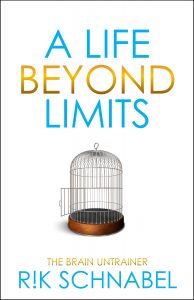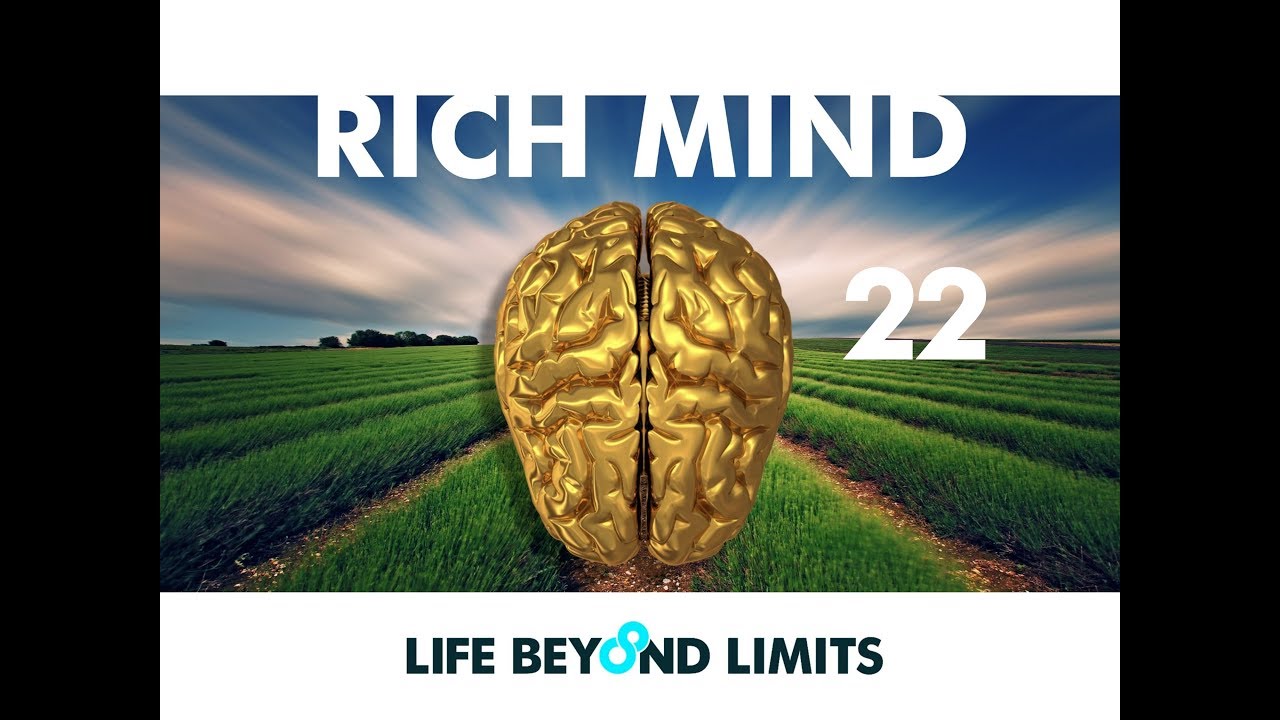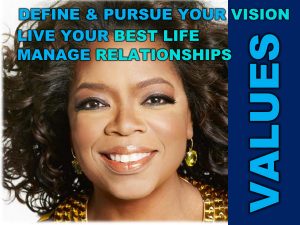 Rapport is currency. Rapport is bankable and an asset that most aspire to. Imagine if everyone around you liked and trusted you. So much so that they will want to promote you or at the least, choose do business with as often as they could. Read on and find out the secrets of the world leaders, the power brokers of the post modern age and the rapport masters.
Rapport is currency. Rapport is bankable and an asset that most aspire to. Imagine if everyone around you liked and trusted you. So much so that they will want to promote you or at the least, choose do business with as often as they could. Read on and find out the secrets of the world leaders, the power brokers of the post modern age and the rapport masters.
Relationships in a word is everything. In our personal and professional life, if we cannot relate well to others, we cannot build or create a relationship – it’s really that simple. Yet where in your education can you recall being taught how to master the art of relationship building? That’s right – never, no-where and no-one will have taught you this highly valuable skill. In fact, this information is usually exclusive to the well-healed leaders of a post modern society and hence, that’s why I guess they’re leaders. What you are about to learn and upon learning it myself, caused me to earn $10,000 in 10 minutes.
After learning rapport, I made $10,000 in 10 minutes!
As we moved from the educational institutions and were ushered into our careers, we wondered why we found integrating into the strange world of work so challenging. Gaining that promotion was so frustrating. Promotions were gleaned from those within the inner circle. Those that succeed seem to have a special skill, one that we couldn’t put our finger on it. “What’s so special about them?” we thought!
For those that have never learned the art of Neuro-Linguistic Programming or NLP, you are about to learn that this special yet vital skill for success is called “Building Deep Level Rapport.” Building Deep Level Rapport is learning how to read the unspoken language of the body. The non-verbal communication, the appropriate response. When used correctly, others around you feel comfortable in your presence. Imagine if you could discover a way to help your boss to feel comfortable in your presence or create deep level, harmonious relationships with your clients?
By learning and applying Deep Level Rapport skills, I found an amazing shift occur between a potential key client, where previously I had little rapport. Upon realizing my client was Auditory Digital (they thought in their heads – a lot), which means he was more statistical and into the details than I was. I changed my language from my usual fast-talking Visual (I think in pictures) way of speaking and became more like him. In less than 10 minutes, he was signing a $100,000 contract of which I made a hefty 10 percent commission. That’s how I made $10,000 in 10 minutes! These skills are hugely powerful and I’ve included a summary of them below.
Should you wish to master these skills, you will learn them in our NLP Practitioner – Level 1 Course and to find more information – click here.
How to gain Rapport?
Deep Level Rapport in simple terms means that if you’re like someone, they are more likely to like you. The basis for rapport is that when people are like each other, they like each other. The two primary ways in which people gain rapport is through Matching or Mirroring (see below). Studies illustrate that the communication between people breaks down into three areas. Words count for 7% of communication, Tonality was 38% and Physiology 55%. Albert Mehrabian is responsible for this percentage breakdown detailing the importance of nonverbal communication channels compared to verbal channels.
Here is the basis of how Deep Level Rapport is created…
Matching and Mirroring
We can match a person’s posture or we can mirror exactly a person’s posture. Mirroring is like you are their reflection. We can mirror or match a person’s voice and posture, blinking and facial expression, words and gesturing, physiology and position. For example if we are mirroring, when a person tilts his head to the left, we should tilt the head to the right, just like a mirror. Matching is when they tilt their head to the right and you tilt your head to the right. Mirroring is however a deeper level of rapport.
Align your posture similar to the curvature of the spine. When you sit across someone, you can assume a mirror position of the hands, legs, head etc. When a person talks, you can observe the gestures used and hand movements. You can use the same gestures when responding back. However, do not try to imitate every gesture every time, otherwise it will look like you are mimicking them. When a person is talking simply notice the gestures used, and use them when you are responding.
Rapport is the connection between two or more people. By having rapport with someone, you achieve much deeper levels of connection, however without rapport, relationships can unravel and become near impossible to achieve. To be a master communicator, it is important that you understand the varying styles of communication and adapt your behaviour appropriately so that what you communicate is received in the way you desire. Remember, the meaning of the communication is the response you get.
Think of people with whom you get on very well. Notice the kinds of words and body actions they use. Also, be aware of their speed of communication and volume. Do they speak in pictures more than they speak using words that describe feelings, sounds or do their words seem detached from emotions, using terms that suggest a process? You will probably notice that those you connect best with naturally use a similar style of communication as yourself.
Six Main Elements of Building Rapport
People like people like themselves or how they would like to be. When we want to improve our communication with someone, the primary way to do this is by matching and mirroring them. This is the replication of what they are doing either exactly or as a reverse i.e. if you were facing them and they lifted their right hand, then you would lift your left hand to mirror them, and right hand to match them.
#1: Match the Modality
The modality is a person’s preferred sensory method of taking in data and these are Visual, Auditory, Kinesthetic or Auditory Digital. By realising someone’s modality preference, it is possible to communicate in a way in which they see, hear, feel and understand you best.
Visual people describe their world in pictures or words that describe the qualities of pictures such as: bright; colourful; dark; dull; look; picture; seek-out; see, etc.
Auditory people describe their world in sounds or words that describe the qualities of sound such as: loud; soft; raspy; clear; hear; listen; silent; sounds-like; blaring, etc.
Kinesthetic people describe their world in pictures or words that describe the qualities of feelings such as: feel; grasp; touch; sense; soft; hard; full, etc.
Auditory Digital people describe their world in pictures or words that describe the qualities of thought and understanding such as: think; understand; process; analyse; systemise; be mindful, etc.
#2: Matching and Mirroring Physiology
When we replicate the physical actions of another such as their hand movements, posture, facial expression, eye blinking rate or movements, it undeniably sends a message to their unconscious mind that we are like them. Try matching a person’s posture and you’ll see exactly what I mean. They will start to feel, look and sound more comfortable. Your conversation will seem to flow.
#3: Matching and Mirroring Voice and Language
Deep Level Rapport can also be achieved by matching the way that they speak such as the tone, volume and tempo. If they use specific words you can often use these too. By using their verbal modalities (see above), rapport will be reinforced.
#4: Matching and Mirroring Breathing
By breathing at the same rate, from the same location (high, middle or low) as them, you will find a rapport shift in them. As this is a very subtle method, it can have a very high impact in creating highly valuable rapport. In addition, it allows you to create empathy of how they are feeling.
#5: Matching and Mirroring Information Chunks
If you are speaking with someone who is always talking about specific details, then by matching these words and topics will build instant rapport. Similarly, if someone is always talking about the bigger picture, then do likewise to build rapport. Alternatively, if someone is always getting into the details, then chunk down into the detail and watch your rapport build.
If someone talks in twenty second chunks of information and you respond with a two second answer, you will break rapport. You will need to respond in around a twenty second chunk of time.
#6: Matching and Mirroring Common Experiences
By matching other people’s similar interests, rapport is built very quickly. Matching hobbies, backgrounds or beliefs is what we stereotypically determine as rapport. This is what usually builds relationships when they first begin. This used to be the only level of which rapport used to be built until more sophisticated understanding pursued.
#BONUS: Have Their Highest Intention in Mind
If you care about others, it is uncanny how others seem to care about you. All good rapport begins with good intentions for the other person.
Calibration
To test whether you are in rapport with someone, you can become aware of their reactions to your communication. This is called calibration. By watching how they react to you in these minute ways, you can change your communication with them accordingly. For example; drop your arm down by your side and see if they do the same. If they do, chances are you are in rapport. If you are both speaking quickly and you slow down your pace and they do too, you have rapport.
Pacing and Leading
Another way to understand this and to determine if you have rapport with someone is by noticing how their communication changes as you change yours.If someone is speaking very quickly and you match the speed and then slow down, if they also slow their speaking, then you are pacing them. By this rationale, if you notice someone copying you, i.e. they lift their glass just after you do, then you are pacing them. This is a powerful sign of rapport.
By learning and applying Deep Level Rapport skills, I found an amazing shift occur between a potential key client, where previously I discovered upon learning these skills, that I had little rapport. Upon realizing my client was Auditory Digital, which means he was more statistical and into the details than I was, I changed my language from my usual fast talking visual way of speaking and became more like him. In less than 10 minutes, he was signing a $100,000 contract of which I made a hefty 10 percent commission. These skills are hugely powerful and I’ve included a summary of them below. Should you wish to master these skills, you will learn them in our NLP Practitioner – Level 1 Course and to find more information or phone: +61 3 8669 1121.



 At our recent Journey Beyond Limits in Melbourne, we enjoyed relating, sharing and discovering our thoughts and views on the subject of “Relationships Beyond Limits!”
At our recent Journey Beyond Limits in Melbourne, we enjoyed relating, sharing and discovering our thoughts and views on the subject of “Relationships Beyond Limits!” Chapter 6: Become Conscious – Excerpt from Life Beyond Limits
Chapter 6: Become Conscious – Excerpt from Life Beyond Limits
 Courtesy of Dr. Phil McGraw
Courtesy of Dr. Phil McGraw
 Rapport is currency. Rapport is bankable and an asset that most aspire to. Imagine if everyone around you liked and trusted you. So much so that they will want to promote you or at the least, choose do business with as often as they could. Read on and find out the secrets of the world leaders, the power brokers of the post modern age and the rapport masters.
Rapport is currency. Rapport is bankable and an asset that most aspire to. Imagine if everyone around you liked and trusted you. So much so that they will want to promote you or at the least, choose do business with as often as they could. Read on and find out the secrets of the world leaders, the power brokers of the post modern age and the rapport masters.
 Have you ever considered adding another highly-sought skill to your resume? What about a life coach qualification?
Have you ever considered adding another highly-sought skill to your resume? What about a life coach qualification?
 According to the
According to the 
 Can you actually decide your destiny? It sounds like a bit of oxymoron. If it’s your destiny, how can you decide it? Or do we have a destiny at all, is anything in life preordained? Let’s just for the purpose of providing a bit of a compass here, let’s assume you do have a destiny, let’s call it a “convenient belief.”
Can you actually decide your destiny? It sounds like a bit of oxymoron. If it’s your destiny, how can you decide it? Or do we have a destiny at all, is anything in life preordained? Let’s just for the purpose of providing a bit of a compass here, let’s assume you do have a destiny, let’s call it a “convenient belief.”


 Our habits, beliefs, values and all the decisions we have ever made make up our neural blueprint. That schematic is what determines everything we do and don’t do and is found in the Unconscious Mind. So how can we create permanent change by accessing the bottom of our metaphorical icebergs?
Our habits, beliefs, values and all the decisions we have ever made make up our neural blueprint. That schematic is what determines everything we do and don’t do and is found in the Unconscious Mind. So how can we create permanent change by accessing the bottom of our metaphorical icebergs?